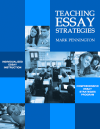Essay Hooks and Response Comments
Most teachers have the same general sense of what an essay hook (or introduction strategy) is and what makes a good one. To make sure that my assumption was right, I googled “essay hooks” to verify the consensus.
Quite a mix of results! Essays for sale sites, scholarly comments, teacher tips, and even an essay hook generator. I’ve included brief comments in order of the resources with links, although my ELA teacher cognitive dissonance pits my need to cite references and avoid plagiarism with my distain for cheating and paying others to do one’s own work. Here’s representative sample of comments:
An essay hook is the first one or two sentences of your essay. It serves as an introduction and works to grab the reader’s attention. The first couple sentences will help your reader decide whether they want to continue reading your essay or not.
The hook provides an “emotional connection with your reader” (Tucker).
“A fisherman will use a shiny lure to get a fish on his or her hook” George Brown University.
When writing an essay, the hook is a connection to the real word that gets the readers interested in reading the rest of the essay.
“Getting your reader to say, ‘Wow! Cool!’ or ‘I need to read more about that!’” (Unknown Blogger)
Generally, I think my assumption was correct. Teachers agree that introduction strategies, such as hooks, are necessary to engage the reader and set up the thesis statement in an essay introduction.
Teachers may even know how to teach a variety of essay hooks. However, writing comments to respond to student essays as formative assessment (first or second drafts) and summative assessment (final published draft) is tougher work. It’s both art and science.
The Art of Writing Essay Introduction Comments
Obviously, the teacher needs to comment so that students will actually read and apply the advice. The more I teach, the more I realize how much of my success (and lack thereof) is due to how much I can motivate students. In terms of teaching writing, this means that the teacher needs to know the individual student—what the student already knows, how much criticism the student can take, and if the student responds to cajoling or praise. How many comments will the student be able to handle? How general or specific should the comments be? Does the student have a thin or thick skin?
The Science of Writing Essay Hook Responses
The teacher has got to have the experience both as a reader and as a writer to know what an effective essay introduction looks like. Doing essay read-arounds and norming student essays can be eye-opening (and sometimes humbling) experiences for teachers. Writing is both an objective and subjective experience, as is reading. What makes sense or moves me can be quite different than what does so to a colleague or student. However, most of us can learn to spot a good essay introduction and a poor one… an effective hook and an ineffective one.
Combining the art and science of essay comments, it makes sense to have options. Frankly, many of the same comments will apply to most students. How many
times have most writing teachers written the same comment a dozen times in grading a batch of student essays? Using e-comments to insert into online student essays submitted on Microsoft Word or in Google Docs helps teachers be selective, prescriptive, and efficient. Of course, many teachers find that printing off a page of e-comments works better for students. Either way, there is a built-in accountability for students to revise work according to the comments. Let’s face it… having an effective bank of essay e-comments would save teachers a whole lot of grading time!
Check out these 16 introduction strategies (hooks) and thesis statement e-comments, with clear instructions about how to insert this comment bank into Microsoft Word HERE. Plus learn how to insert your own comments into your own e-comment bank.
I’ve developed 438 of the most common comments teachers make to respond to student essays. Comments are categorized and given a simple alphanumeric code to access a downloaded comment, for example:
e2 Needs a Different Introduction Strategy Use a variety of introduction strategies. Add a Definition, Question to be Answered, Reference to Something Known in Common, Quote from an Authority, Preview of Topic Sentences, Startling Statement, Background, or Controversial Statement. DQ RAPS BC
Works great in Microsoft Word and can be batch dumped easily into Google Docs. Nice for paper comments as well. The comments use the same, consistent language Common Core language of instruction. I’ve included this comment download in my TEACHING ESSAYS BUNDLE and The Pennington Manual of Style (a slice of the comprehensive essay program).


